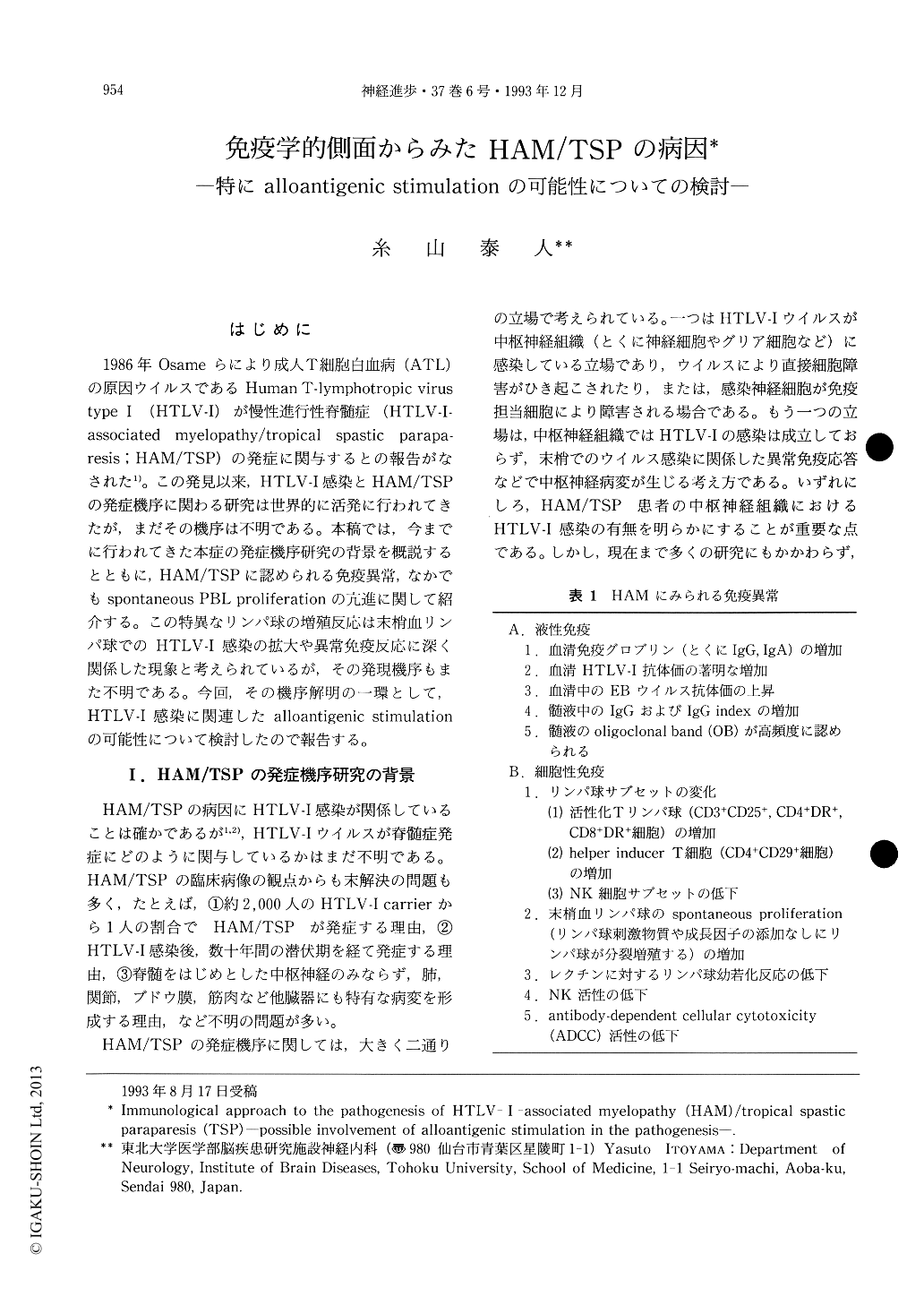Japanese
English
- 有料閲覧
- Abstract 文献概要
- 1ページ目 Look Inside
はじめに
1986年Osameらにより成人T細胞白血病(ATL)の原因ウイルスであるHuman T-lymphotropic virustype I(HTLV-I)が慢性進行性脊髄症(HTLV-I-associated myelopathy/tropical spastic paraparesis;HAM/TSP)の発症に関与するとの報告がなされた1)。この発見以来,HTLV-I感染とHAM/TSPの発症機序に関わる研究は世界的に活発に行われてきたが,まだその機序は不明である。本稿では,今までに行われてきた本症の発症機序研究の背景を概説するとともに,HAM/TSPに認められる免疫異常,なかでもspontaneous PBL proliferationの亢進に関して紹介する。この特異なリンパ球の増殖反応は末梢血リンパ球でのHTLV-I感染の拡大や異常免疫反応に深く関係した現象と考えられているが,その発現機序もまた不明である。今回,その機序解明の一環として,HTLV-I感染に関連したalloantigenic stimulationの可能性について検討したので報告する。
Human T-lymphotropic virus type I (HTLV-I) is etiologically related to HTLV-I-associated myelopathy (HAM)/tropical spastic paraparesis (TSP). However, it remains unknown how HTLV-I infection relates to the pathogenesis of HAM/TSP. There have been many immunological abnormalities, such as activated immune functions and increased spontaneous PBL proliferation, in this disease. There are also several lines of evidence indicating that immunological mechanisms are involved in the pathomechanism. Recently, there were reports that HTLV-I infected lymphocytes gained altered HLA antigens (so-called alien antigens), or contrarily they lost their own HLA antigens. If these changes may occur in patients with HAM/TSP, the newly expressed alien HLA probably act as allogeneic stimuli. On the other hand, infected lymphocytes with lack of some HLA antigens may escape from the patient's immune surveilance after they were transfused. In the preliminary studies, we demonstrated allolymphocytotoxic antibodies, which had multispecific HLA reactivity, in the sera of 38.7% of HAM/TSP patients. However, we could not demonstrate the presence of allogeneic lymphocytes in the peripheral blood mononuclear cells of one HAM/TSP patient, using PCR in combination with SSOP.

Copyright © 1993, Igaku-Shoin Ltd. All rights reserved.


